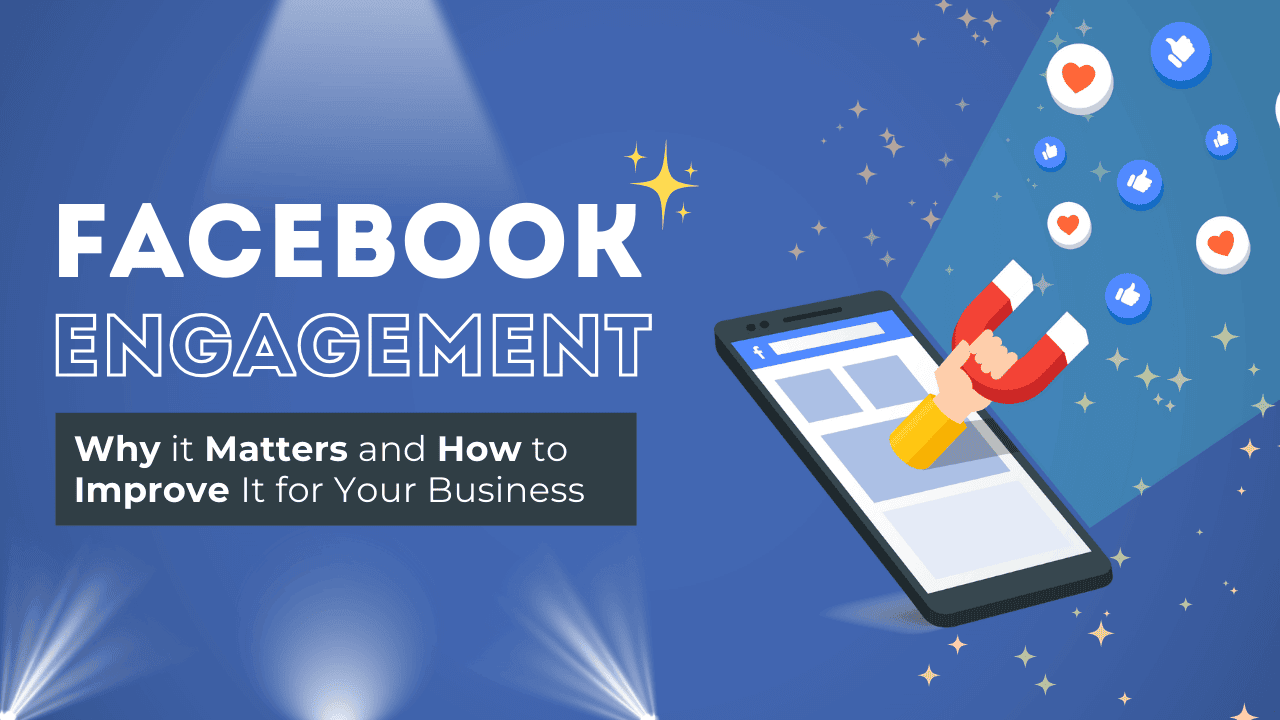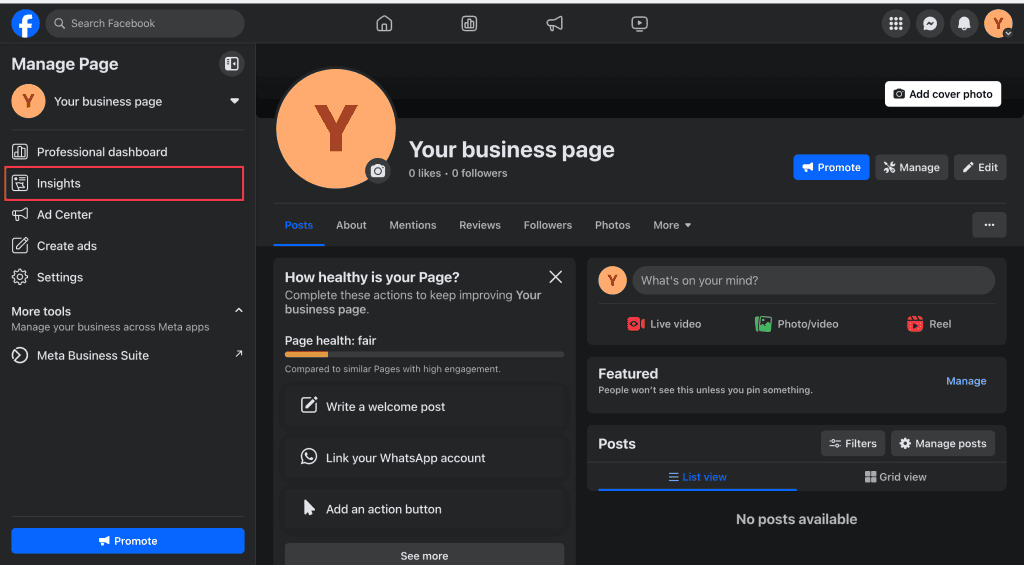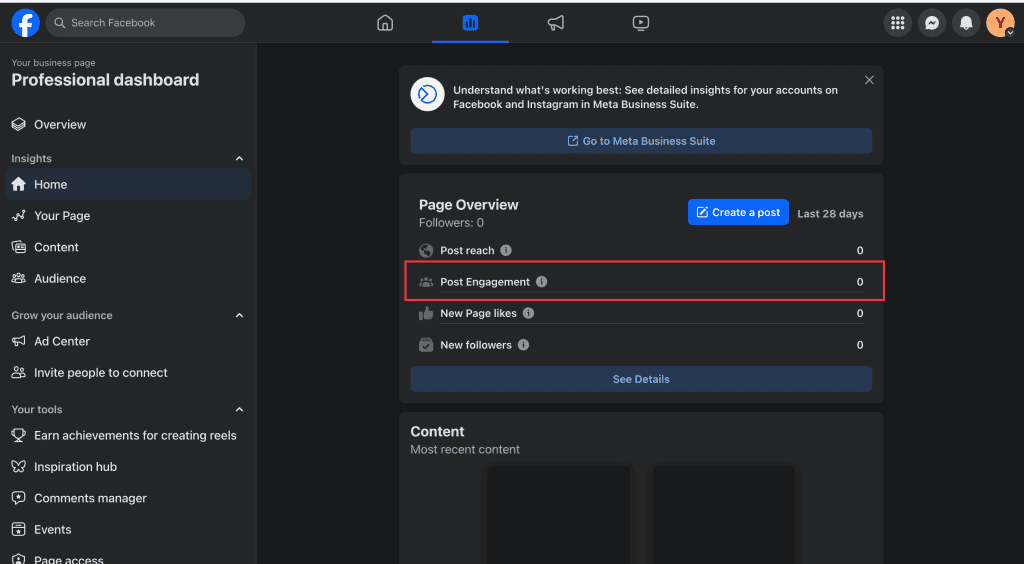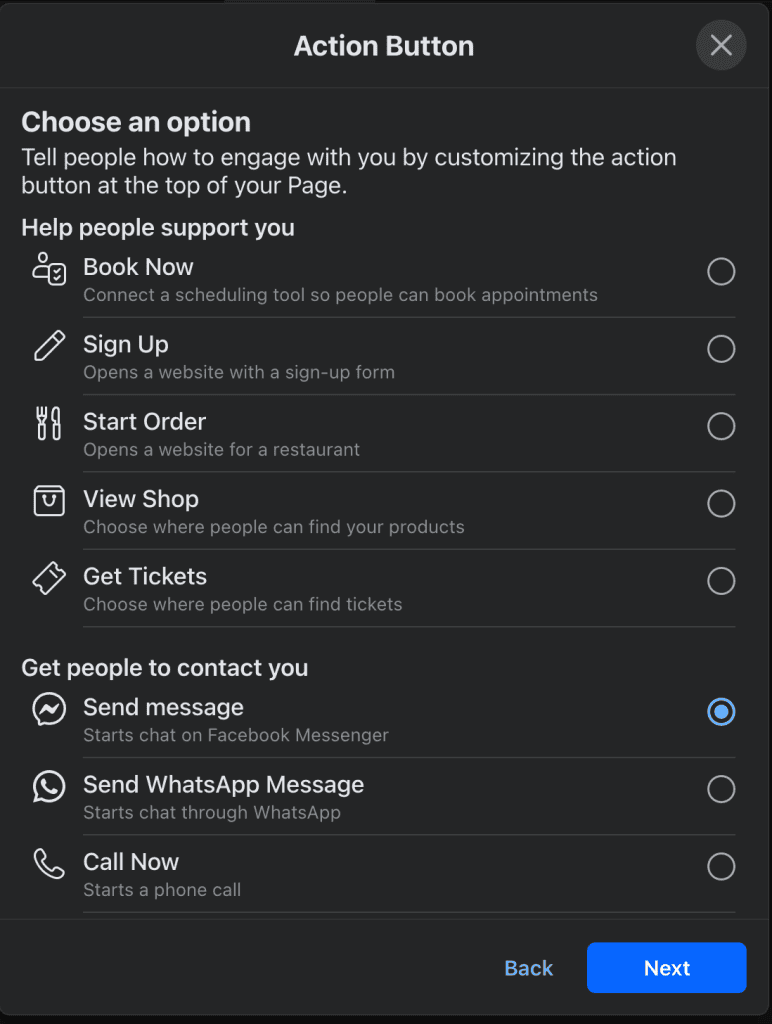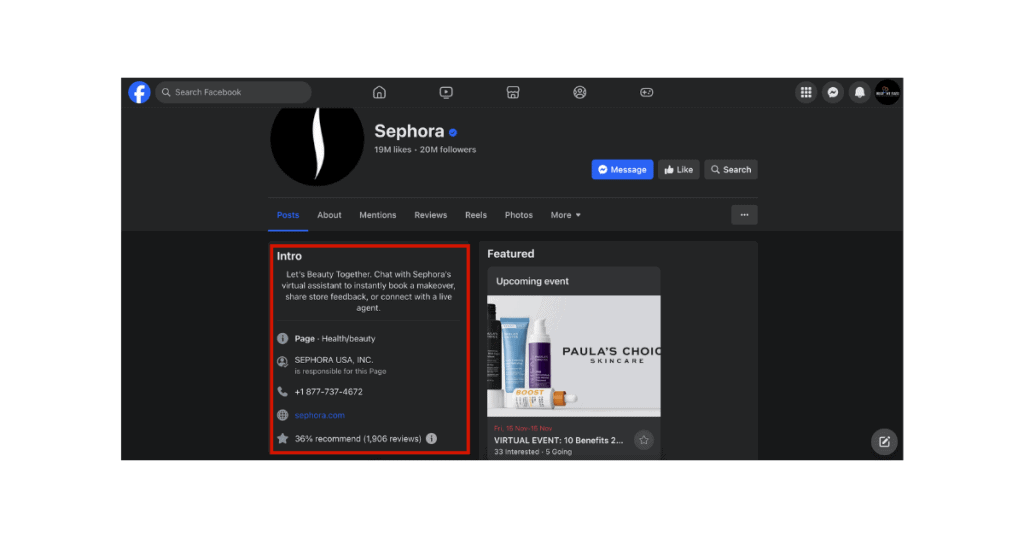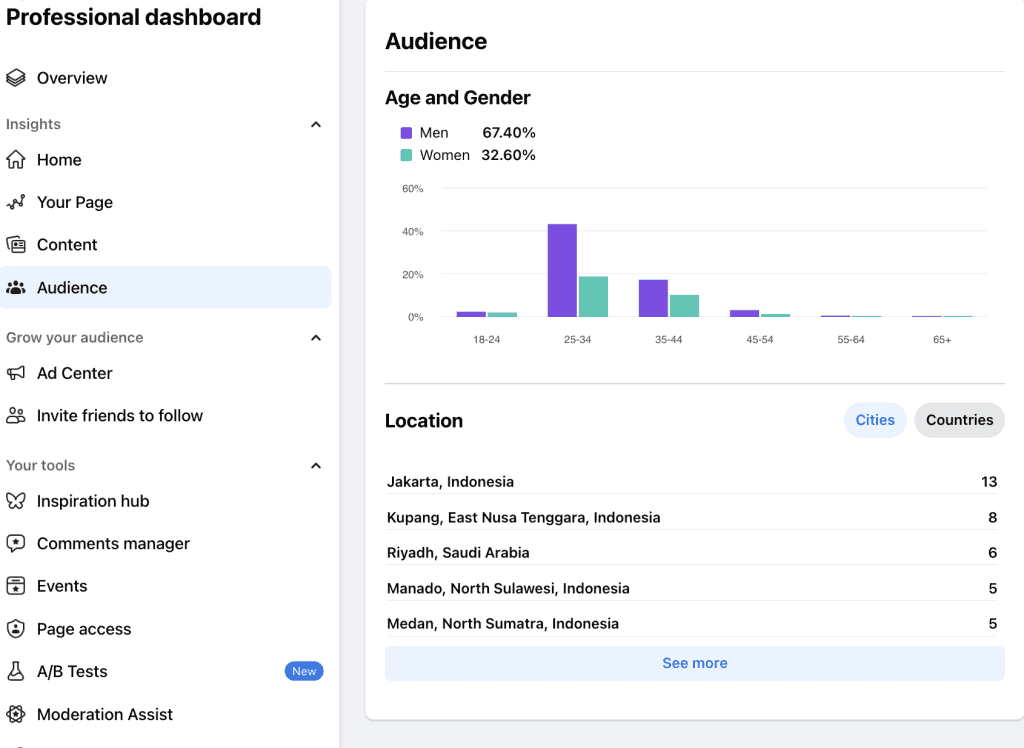Are you wondering how to grow your Facebook page but feeling frustrated by low engagement? You’re not alone! Many small business owners pour their hearts into creating an attractive Facebook presence, only to see their posts get little to no interaction. It can be disheartening when your hard work seems to go unnoticed, especially in a world where organic reach has dropped to a mere 0.07%.
But don’t worry! Engagement on Facebook is not just a number; it’s a vital part of building connections with your audience. When people interact with your posts—liking, sharing, and commenting—they’re not just boosting your visibility; they’re telling the Facebook algorithm that your content matters. Think about it: many businesses have thrived by leveraging Facebook to drive a whopping 80% of their customer referrals. That’s the kind of success you can achieve, too!
In this article, we’ll explore some friendly, straightforward strategies to help you not only grow your Facebook page but also create a vibrant community around your brand. Let’s dive in and discover how you can turn your Facebook presence into a powerful tool for engagement and growth!
What exactly is Facebook page Engagement?
Before we dive into strategies, it’s essential to grasp the concept of Facebook engagement.
In simple terms, Facebook engagement refers to the actions your audience takes in response to your content—this includes liking, commenting, sharing, or clicking links on your posts, Stories, or ads.
To calculate the engagement rate for a single post, you divide the total number of reactions, comments, and shares by the number of followers on your Facebook business page, then multiply that figure by 100.
However, this calculation applies to individual posts. For a broader view, Facebook provides an overall engagement rate for your page through the Facebook Page Insights feature. You can access this by clicking the “Insights” button located on the left side of your Facebook page.
Once you select “Insights,” you’ll receive a comprehensive overview of your page’s engagement metrics.
Why Facebook Page Engagement Matters?
Understanding why Facebook Page engagement is important is key for businesses that want to improve their online presence. Engagement—like likes, comments, shares, and clicks—shows how much your audience interacts with your posts. A higher engagement rate means you have a more interested and loyal audience, which helps your content get seen by more people.
Facebook’s algorithm tends to show posts with higher engagement in users’ News Feeds. This is vital because organic posts usually only reach about 5% of your followers. By boosting engagement on Facebook, you increase the chances that more people will see your posts, which helps raise awareness of your brand and can lead to more customers.
Additionally, when your audience engages with your content, it builds trust and a sense of community. Responding to comments and messages quickly can strengthen these relationships and encourage more interactions. This not only helps create loyal customers but also gives you insights into what your audience likes and wants.
To boost engagement on Facebook, you can try strategies like creating interesting and relevant content, using features like polls and live videos, and encouraging your followers to share their own content related to your brand. Regularly checking your Facebook Insights can help you see what kinds of posts work best, allowing you to adjust your content accordingly.
How to Grow Facebook Page Engagement?
There’s no single solution for anyone who wants to know how to grow Facebook page engagement. However, there are several strategies that, when applied properly, can make a difference.
If you’re new to managing a Facebook business page, begin with the basics. If you have some experience, move on to the intermediate tips. And if you’re a seasoned expert seeking advanced techniques, check out the final section.
1. Share Quality Content Regularly at the Right Time
To effectively market your business on Facebook, it’s important to post consistently. The frequency that works for you may vary based on your team’s capacity. While there’s no perfect number, generally speaking, posting one to two times a day is recommended for Facebook.
Don’t stress about hitting a specific number if it means sacrificing the quality of your posts. Quality should always come first, especially in a space filled with competition. Start with a posting frequency that feels manageable for you, and as you refine your content creation process, consider increasing your daily posts.
To avoid letting social media tasks slip through the cracks, set up a social media content calendar. This allows you to schedule your Facebook posts in advance using third-party tools. You can easily plan everything from images to videos for your Facebook page and groups.
When it comes to timing, research shows that the best time to post for maximum engagement is around 10 AM on Fridays. However, the ideal posting time can differ based on your specific audience’s online habits. To truly understand how to grow your Facebook page, monitor when your followers are most active and adjust your posting schedule accordingly.
2. Enhance Your Top Posts for Better Engagement
Just like other social media platforms, Facebook favors content that generates high engagement. Simply put, posts with more likes, reactions, comments, and video views are more likely to show up in users’ news feeds.
If you have a budget for advertising on Facebook, think about boosting your best-performing posts. Since your audience has already engaged with these posts, they are great candidates for boosting. If you’re working with a tighter budget but want an immediate impact, you might also consider using the service Buy Facebook page likes from trustworthy providers.
By implementing an effective Facebook ad targeting strategy, you can further engage your audience and expand your reach.
Here are some best practices to make your boosted posts more appealing:
- Narrow down your audience or create a custom audience to better target your posts.
- Keep your text brief and your message clear to capture attention quickly.
- Limit the duration of your ad campaigns, as performance tends to drop if they run for more than a week.
For example, a well-crafted ad stands out with a compelling heading like “Brilliant,” which draws readers in to learn more about the products being promoted.
3. Engage with Your Audience Through Comments and Messages
It may seem simple, but engaging with your audience on Facebook is crucial. Social media platforms thrive on interaction, so when your followers comment or message you, make sure to acknowledge them! Set aside time each day to connect with your fans on Facebook by responding to their comments, direct messages (DMs), and any posts in which they tag you.
Responding to comments not only builds relationships but also sends a signal to Facebook that there is engagement on your posts. This engagement can help improve your visibility in the Facebook News Feed, making your content more accessible to a wider audience.
While it’s ideal to respond to every single comment, focus on addressing questions or complaints from your customers. Ignoring their concerns can create a negative experience and diminish trust in your brand. Additionally, responding thoughtfully to comments can reveal valuable insights about what your Facebook audience is looking for, allowing you to create more relevant and engaging content.
Be mindful, though, that spam comments from fake Facebook accounts can detract from genuine engagement. Spam comments often include irrelevant links or repetitive phrases designed to mislead or distract users. It’s important to moderate these comments by reporting or deleting them to maintain a healthy community atmosphere. This not only keeps your page professional but also ensures that genuine interactions shine through.
4. Make Use of User-Generated Content (UGC)
One big mistake brands often make is only posting about their own products. This can get boring, and your audience may lose interest over time. Instead, using user-generated content (UGC) can make your Facebook page more exciting and increase engagement and sales. UGC can be helpful at every stage of the buying process, whether you post it directly on your page or show your Facebook feed on your website.
Studies show that people are 2.4 times more likely to see UGC videos as real compared to brand-made content. This shows why UGC should be part of your Facebook marketing plan.
Here are some simple tips to make the most of your user-generated content:
- Use the Right Hashtags: Encourage your fans and followers to use your special hashtags when they talk about your products. This helps you see what people are saying about your brand and makes it easier to track conversations.
- Set Clear Goals: Think about what you want to achieve with your UGC, like getting more sales, increasing engagement, educating users, or building trust in your brand.
- Always Ask for Permission: Before sharing someone else’s content, ask them if it’s okay. This helps keep good relationships with your fans and brand supporters.
- Add UGC to Facebook Ads: Don’t be afraid to ask customers for photos or video reviews. You can include these in your Facebook ads to tell a story that builds trust.
5. Ensure Every Post Has a Relevant Call-to-Action
To boost engagement on your Facebook page, it’s essential to include a call-to-action (CTA) in every post. One effective practice recommended by Meta is to have an action button on your page, such as “Shop Now” or “Learn More,” based on your marketing goals.
This approach is especially helpful for new visitors. It guides them directly to Messenger, WhatsApp, or your website, allowing them to learn more about your business.
Beyond the action button, every post should also feature a call to action. This not only encourages engagement, such as more comments, but also signals to your audience that you want to hear from them.
Your call to action can be simple, or you can spice it up by asking questions at the end of your posts. For instance, you might ask, “What’s your favorite product from our new collection?” or “What are your thoughts on [topic of interest to your audience]?”
The key is for every post to have a purpose and invite a response from your Facebook audience.
6. Frequently Update Your Page’s Cover Photo, About Section, and Contact Info
When setting up your Facebook page, you’re asked to provide basic details like your business name and category. However, it’s important to go further by including an engaging “Intro” section and an eye-catching cover photo.
Why is this important? This is your opportunity to make a great first impression on potential followers. If done well, you can attract new audiences and start building your community. For instance, take the drink company Innocent; their about section is brief yet filled with their unique brand voice.
When new customers visit their Facebook page, they quickly grasp the brand’s personality, the products offered, contact information, and their review rating. Their cover photo enhances this by showcasing their appealing packaging.
Updating essential business details, such as contact info and address, helps customers get their questions answered quickly. Additionally, a fun, brand-related “Intro” section allows new visitors to understand your vibe instantly.
If you haven’t refreshed this information in a while, now is the time to do so.
7. Leverage Relevant Trends in Your Industry
Aligning your Facebook content with current trends, holidays, memes, and hot topics in your industry can significantly boost engagement. Since these subjects are already gaining traction, Facebook tends to promote them in the News Feed, making users more likely to engage with timely and relevant content.
Each year, Facebook publishes a trends report to give you insights into the topics that are performing well on the platform.
Additionally, you can utilize social listening to stay informed about conversations happening in your comments, inbox, and groups.
For example, some Facebook pages are known for their timely content, often using memes to connect with current events. After a recent Meta outage, they posted a relevant and humorous update that resonated with their audience.
While not every post needs to be tied to a current trend, planning some in advance for upcoming events and holidays can keep your content fresh and engaging.
Tip: If a sound or audio is trending on TikTok or Instagram, it’s likely to do well on Facebook Reels as well. Consider repurposing or cross-posting these trends while they’re still popular to maximize your reach and engagement.
8. Boost Engagement with Facebook Stories
Facebook Stories are a unique feature that can significantly enhance your engagement. Since these Stories disappear after 24 hours, they create a sense of urgency among your followers, encouraging them to view your content before it vanishes.
To make the most of your Facebook Stories, take advantage of the various interactive features available. You can use stickers, GIFs, emojis, and boomerangs to make your content more engaging. Additionally, adding a web link button allows you to redirect your audience to a specific URL, driving traffic to your website or promotions.
Despite their potential, many businesses overlook Facebook Stories in their engagement strategy. To ensure you’re maximizing this opportunity, plan and create content in advance. The good news is that if you’re already crafting Stories for Instagram, you can easily repost them on Facebook, saving you time and effort.
By using Facebook Stories actively, you can connect better with your audience and keep your brand in their minds, which is a key part of how to grow your Facebook page.
9. Join and Participate in Facebook Groups
Engaging in Facebook Groups is a key strategy for increasing your Facebook page’s visibility and boosting engagement. By participating in relevant groups, you can connect with potential customers in a more authentic way, rather than focusing solely on selling your products.
For example, if you sell skincare products, consider joining popular skincare groups. Actively participate in discussions and share valuable insights without pushing your merchandise. This approach allows community members to recognize your expertise and check out your Facebook page, which can lead to increased engagement.
Once you’ve established yourself, you can occasionally share product links, provided they align with the group’s rules. However, it’s important not to treat Facebook Groups as just another sales channel; focus on building relationships first.
Alternatively, consider creating your own Facebook Group centred around your industry. This can help foster a community of enthusiasts where conversations about your products can arise naturally.
10. Analyze and Track Your Facebook Page Performance
Regularly analyzing and tracking your Facebook page performance is crucial for understanding what works and what doesn’t. By keeping a close eye on your engagement metrics, you can identify trends, adjust your strategies, and ultimately grow your Facebook page. Here’s how to effectively track your performance:
- Use Facebook Insights: Facebook provides a built-in tool called Facebook Insights, which allows you to monitor your page’s performance. Here, you can find key metrics like page views, post reach, engagement rates, and audience demographics. Understanding these metrics helps you see which types of posts resonate most with your audience, enabling you to tailor your content accordingly.
- Monitor Engagement Rates: Keep track of likes, comments, shares, and overall engagement on your posts. The engagement rate is a crucial indicator of how your audience is responding to your content. If certain posts receive significantly higher engagement, analyze what made them successful. Was it the content type, the time it was posted, or perhaps the call-to-action used?
- Evaluate Posting Frequency: Assess how often you post and how it correlates with your engagement rates. Are you posting too often, or not enough? Adjusting your posting frequency can make a big difference in how your audience interacts with your content.
- Identify Audience Behavior: Understanding your audience’s behavior is key to growing your Facebook page. Use Insights to learn when your followers are most active online. This information allows you to schedule your posts at optimal times to maximize visibility and engagement.
- Test and Adapt: Don’t be afraid to experiment with different types of content and strategies. Track the performance of various posts and campaigns to see what drives engagement. If a certain style or topic works well, consider making it a regular part of your content strategy.
- Set Goals and Review Progress: Establish specific goals for your Facebook page engagement, such as increasing likes, comments, or shares by a certain percentage. Regularly review your progress towards these goals and adjust your strategies as necessary to ensure continued growth.
Remember, the key to success on social media is not just to post content, but to engage and build relationships with your followers. Implementing these practices will guide you on how to grow your Facebook page while fostering a vibrant community around your brand.
In Conclusion
So, there you have it! Understanding and boosting your Facebook engagement is a journey that can really pay off for your business. It’s not just about likes and shares; it’s about building real connections with your audience. When you engage meaningfully, you create a community that cares about what you do, and that’s invaluable.
Take these tips on how to grow your Facebook page and put them into action. You’ve got this! Here’s to making your Facebook presence vibrant and engaging, one post at a time. Cheers to your success!

